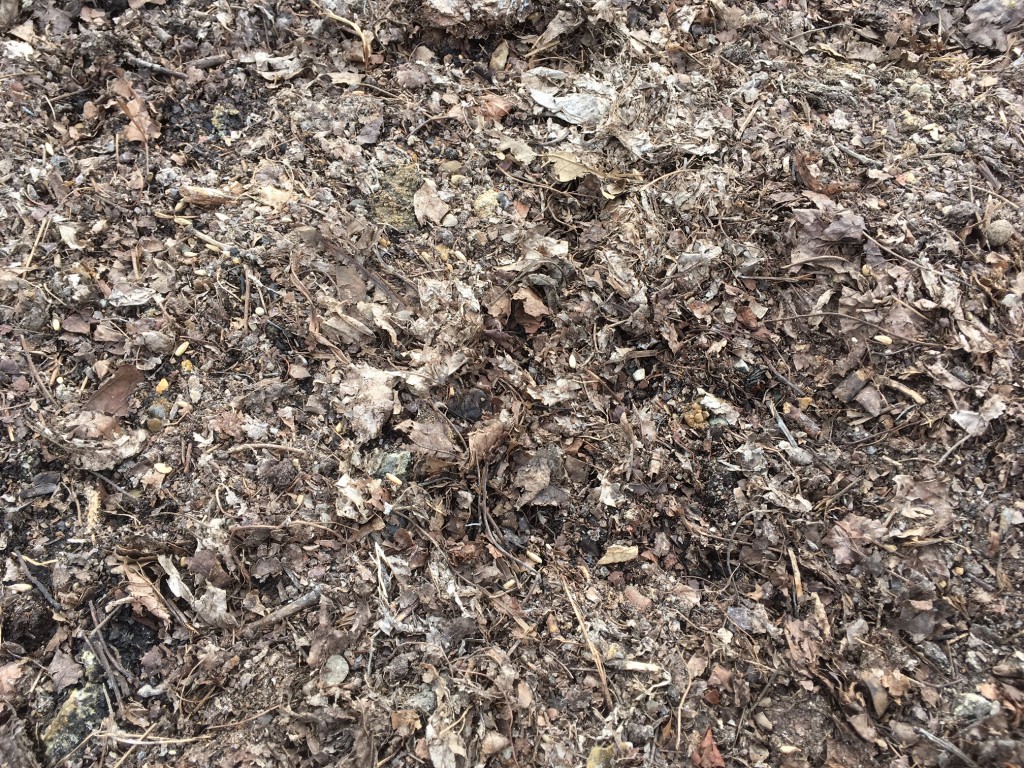A project started in Hocking County in fall of 2016 was the creation of an Urban Farm at the food bank that serves the ten county southeast Ohio Appalachian region. This will allow the food bank to achieve its own personal stream of fresh produce for use in sales, Senior Farmer’s Market vouchers, Meals on Wheels as well as the USDA Summer Nutrition program for school children.
Seven raised beds were constructed with a fill need of approximately 8 cubic yards of material. Funding would not allow purchased topsoil so alternatives were sourced locally. One local partner in The Urban Farm at Southeast Ohio Regional Kitchen is Athens Hocking Recycling Center LLC. Their Organics product is made by combining local food waste obtained through a subscription pick up process which is mixed with wood chips in large windrows via hot composting. The finished product is screened and sold by the yard for bulk pick up. AHRC has been a partner for local food production programs and was able to provide 4 yards of finished compost at cost.
The second compost product is produced in Hocking county. The City of Logan collects municipal yard waste which is cold composted in large piles on site at the city maintenance facility. This product had been used in spring of 2016 as the sole growing medium in raised beds at The Children’s Educational Garden at the Hocking County fairgrounds and plants exhibited extreme chlorosis symptoms. Half of the raised beds would contain AHRC compost, the other half City of Logan. This would allow for comparison for selection of future media as expansion of the garden progresses.
The first compost evaluated was AHRC Organics.
Here is a close up of the product, some cover crop seeds are visible:
Soil test results for AHRC Organics:
Pretty impressive numbers. High organic content, lots of nutrients. You can still see some wood pieces as well as some egg shells if you look close. It is an excellent soil amendment The problem with using it straight is the alkaline pH of 7.7 can cause some problems with certain nutrients being available right away. The soil test states to add sulfur to combat that.
Next up is municipal yard waste from the City of Logan.
Not bad looking stuff, still some bits and pieces. This sample was cold composted for 3-4 years in place prior to being delivered.The soil test results:
Very similar numbers noted here. High organic matter, lots of nutrients, same alkaline pH. I did the same with both. Added ammonium sulfate fertilizer then sowed cover crop seed.
Ammonium sulfate has both sufur, to correct the pH and some nitrogen to help both the cover crops grow and help the soil bacteria break down the residual carbon bits. My hope is that the fertilizer, the cover crops and the winter will combine to help both of these growing media get to a good point for vegetables by 2017. Anecdotally when doing research what I encountered regarding wood/leaf compost seemed to suggest little fertility and an acid finished product. More to be used as a soil amendment and not a pure growing medium. Soil testing suggested the opposite. Both growing media will be reevaluated in spring 2017 after first spring vegetable harvest, then later in summer harvest for production, weed pressure, and chlorosis symptoms.




